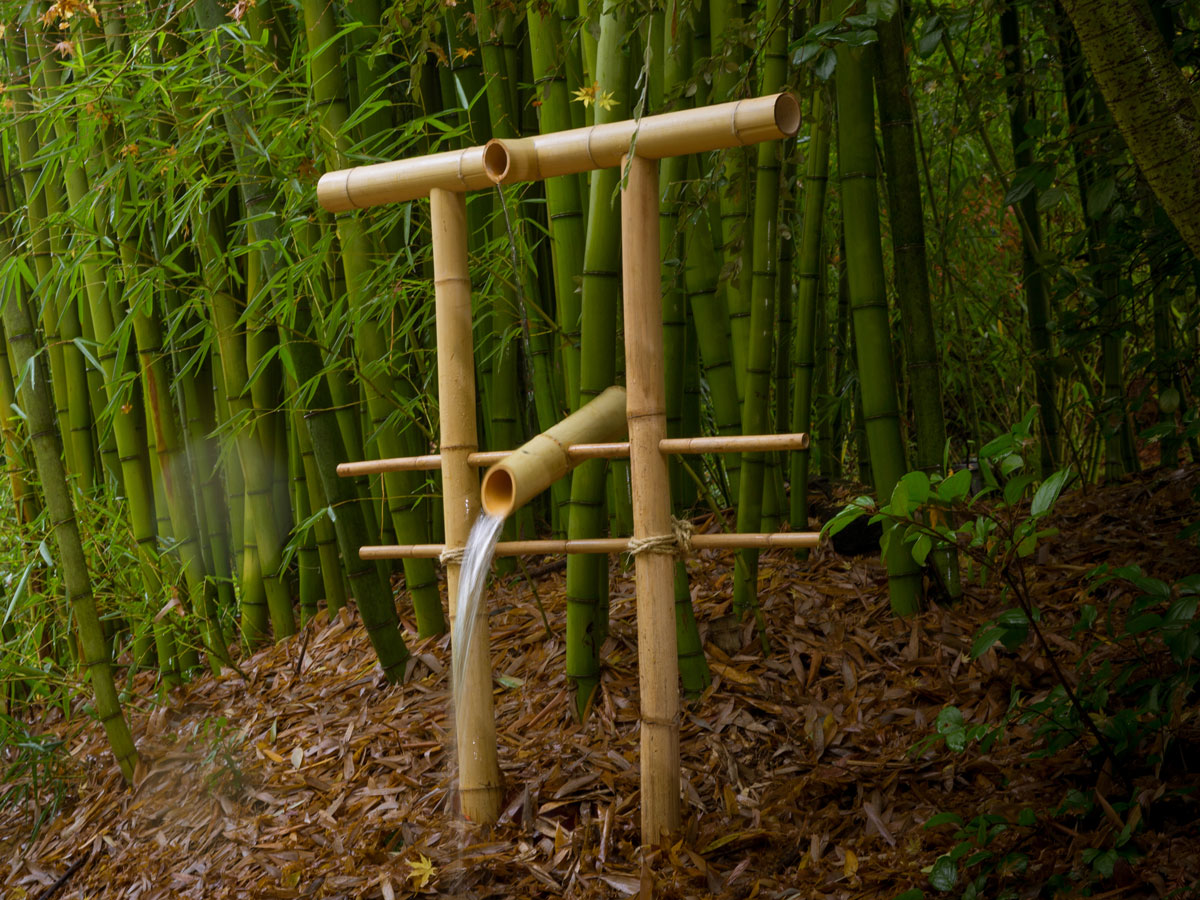
Don’t have this issue? Get it in the Maker Shed.
In Japanese, shishi-odoshi means “deer scarer.” This type of fountain slowly fills a hollow bamboo branch with water, and then suddenly tips — making a gentle knocking sound that will chase away any critters eating your garden. Many Zen gardens also use these rocking fountains as a meditation aid.
I built a small fountain to fit in a planter just 8″ across (see my original project here). Marty Marfin in the Make: Labs built one 3′ tall (shown above) that makes a beautiful focal point for an outdoor garden.
Here’s how to build your own, for about $50–$150 depending on the size you choose.



